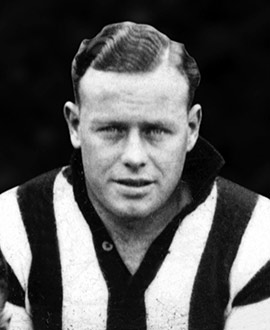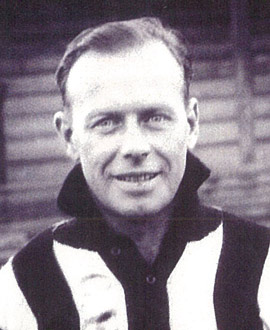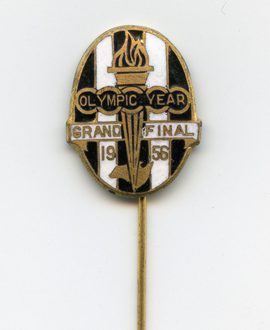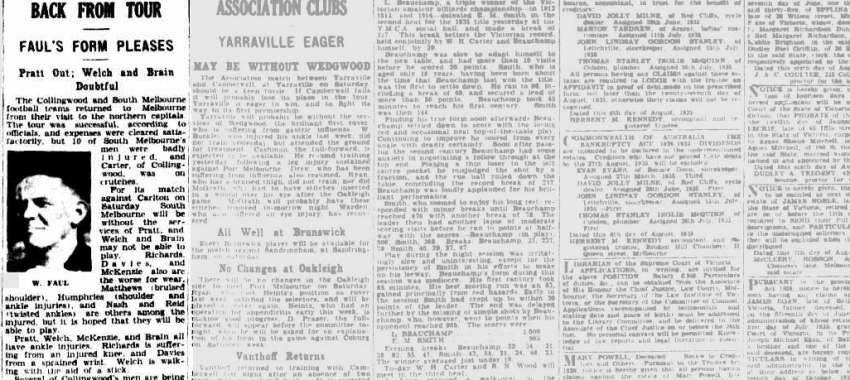Marcus Whelan was a famously cool, calm and polished performer. But as he was preparing for a game against Carlton in 1936, his poise momentarily deserted him. He'd lost his boots.
As panic began to set in he thought of where he'd been that morning – and realised that he'd left his footwear at a barber shop run by the Carlton player he'd be lining up against that afternoon! He'd gone in to Keith Shea's hairdressing salon in Richmond for a shave and some good-natured banter, but left without his boots. Now he was in the position of having to rely on a Carlton opponent's goodwill to get his boots to the ground in time.
Luckily, this was no ordinary Blues footballer. Whelan and Shea were cousins, and firm friends from their days growing up together in Bacchus Marsh. So an urgent phone call to Shea's shop saw him drop the boots off in the Magpie rooms just before the game, to a very confused property steward. When the two players lined up on each other, Whelan simply shook Shea's hand and said, a little sheepishly, 'Thanks for the boots!'
The thing about Marcus Whelan is that he, more than most, probably could have managed just fine if his boots hadn't turned up anyway. He was the kind of high-class player who could have played in slippers and still made the game look easy.
Whelan's Bacchus Marsh background put him in good footballing company as he went to the same school (St Bernards) not only as his cousin Shea but also legendary Blues forward Harry Vallence. Marcus played most of his footy with a local team called Darley, which is where he came to Collingwood's attention in the lead-up to the 1933 season. His class was immediately evident, and he debuted in the fourth round against Richmond.
But Whelan's first few games were spectacularly unsuccessful – so much so that he decided he wasn't cut out for VFL football and returned to the family’s fruit trees and dairy herd. Collingwood secretary Frank Wraith followed him back and convinced him to have a second crack. He played the last five games of the year, kicked a few goals from half-forward and looked much more at home. Even so, Jock McHale stunned most observers during the 1934 pre-season when he predicted that young Whelan would quickly become "a champion".
As usual, Jock was right. With Jack Beveridge moving interstate, Whelan moved into the centre slot and quickly established himself as one of the most skilful and highly regarded 'pivots' in the game. He was all class from head to toe, and everything he did on the field bore a stamp of effortless ease. He was a long, beautiful kick, equally adept with short passes, and one of the best high marks for his size the game has ever seen. Although only 175cm tall, he would regularly outmark much taller opponents. Lou Richards once described this aspect of his game as “glorious”.
In 1956, Jack Dyer named Whelan as one of the best centremen of his time. “He was a spectacular player who could take a brilliant high mark and could hold his own with a ruckman,” Dyer wrote. “He was a magnificent stab kick and could dispose of the ball perfectly while travelling at top speed.” Bob Rose concurred. “He had great skill and did everything with great polish,” Rose said in 1991. “Everything about him was immaculate. He never seemed to be ruffled, and he always seemed to have plenty of time to decide what to do with the ball. He also had a superb football brain, and was one of the most skilful players I’ve played with.”
Whelan was an extremely consistent player who, in the five years from 1936 as he came into his prime, won the Copeland once and placed on three other occasions. There was also the small matter of winning the Brownlow Medal, in 1939, a victory that was hailed by the Argus. "Not only Collingwood supporters, but followers of every club, have no quarrel with the choice; rather, it is applauded everywhere," said the paper.
The Brownlow win had some unexpected side-effects. The extra attention brought more focus, and the year after his win the magazine Pix carried a double-page pictorial spread branding him “the most handsome man in football". That year he also did some ads promoting the beef drink Bonox. "The way to keep fit for football is to drink plenty of Bonox," he was quoted as saying in the ads. "That's the stuff to put beef into you. Bonox is always served at half-time during the big matches."
The attention wouldn't have bothered Whelan, who had little time for that side of things. When he wasn't busy scoffing Bonox at half-time, he remained focused on helping out his team wherever he could. And as brilliant as he was in the middle, sometimes that meant serving elsewhere. Indeed over his career he would play everywhere from half-forward to full-back. "It does not seem to matter to Marcus Whelan where he is placed," wrote the Sporting Globeduring his breakout 1934 season, "for his half-forward displays are equal to those he has given in the centre. His marking and ground play were faultless."
When Jack Regan missed games with a dislocated elbow, Whelan took over at full-back – and of course did brilliantly. And it was there that he moved permanently late in his career, after the war ended, where his judgement, composure and lovely long kicking were still valuable weapons. The war, sadly, had deprived the game of Whelan's class for three whole seasons, from 1943-45. But even when he returned after such a tough and lengthy time out of the game, he still carried all the quality he'd shown throughout his career.
He quietly retired from the game early in 1947, after which he coached St Kilda seconds for a year, then played and coached in Carrum. One of his brothers, Jim, had trained with Collingwood in 1937 but never made it to the seniors. Another brother played senior footy with Bacchus Marsh, and a cousin trained with Carlton. The family bloodlines extended even more directly to Marcus's son Shane, who played 20 games for Collingwood in the late 1960s.
Marcus Whelan remains one of only nine Magpies to have won the game's highest individual honour. But even more than that he is remembered as one of the classiest players ever to have pulled on a Collingwood jumper.
- Michael Roberts
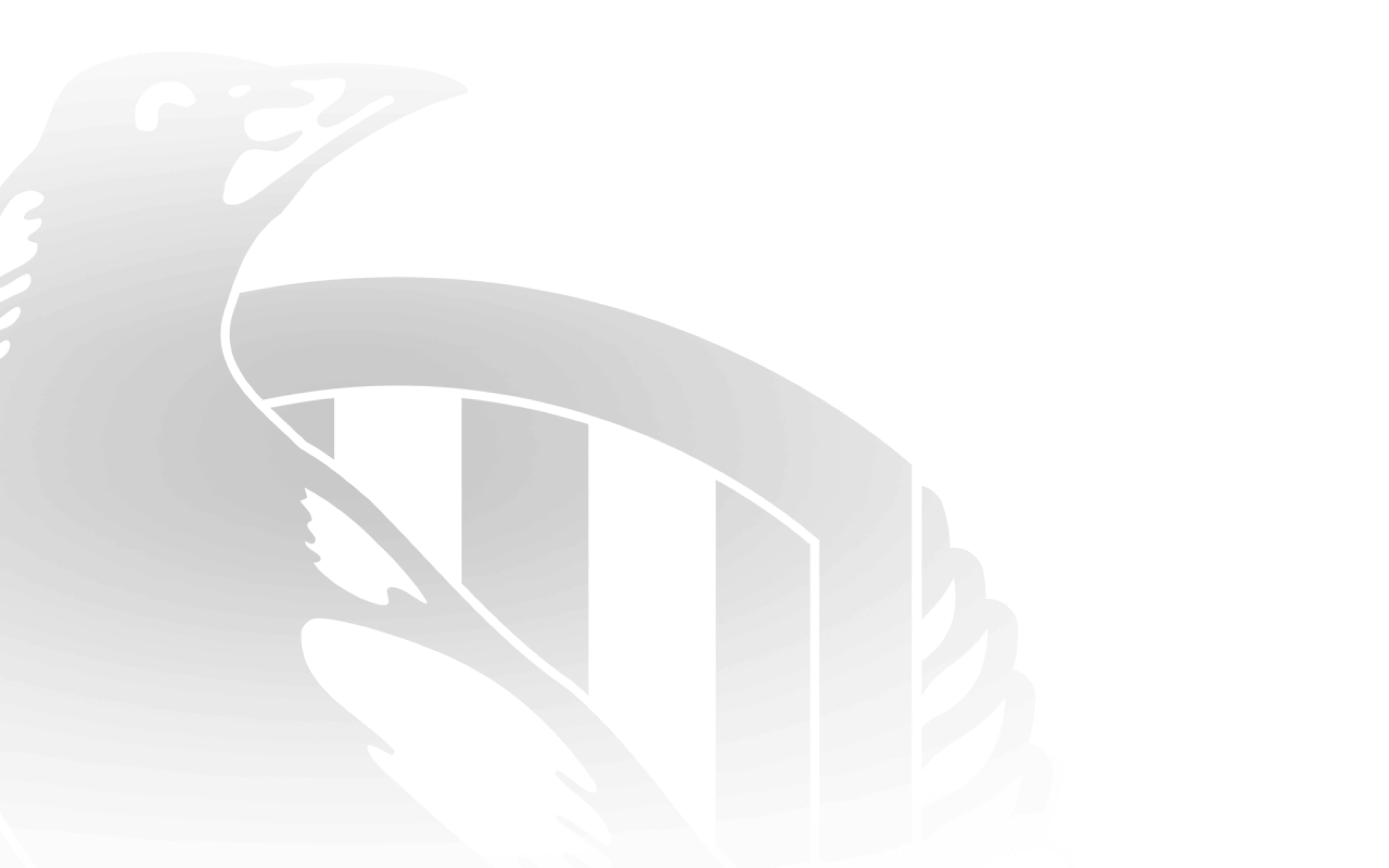
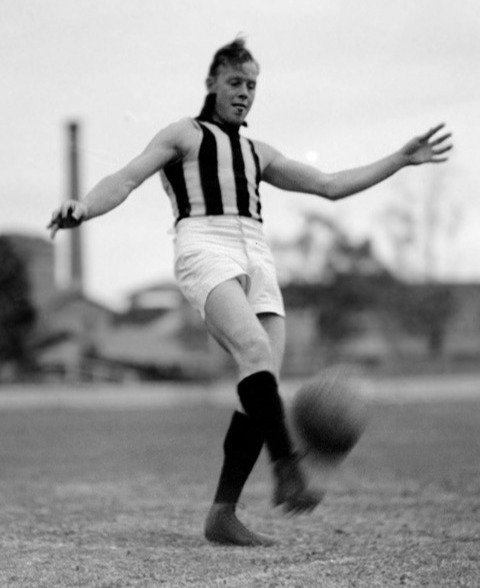





 x2
x2
 x2
x2



